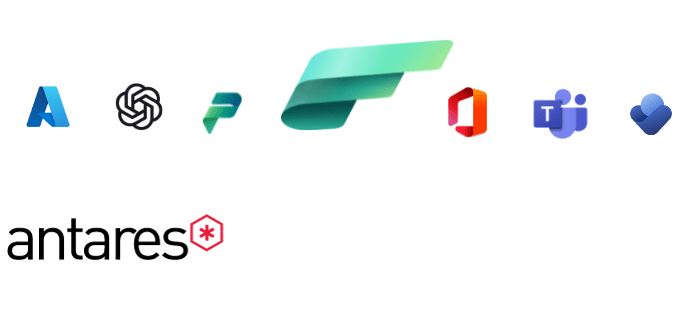From advancing data warehousing solutions to enhancing the flexibility of data lakes through Synapse, Microsoft has consistently been at the forefront of innovation in the ever-evolving world of data management.
Their latest advancement, Fabric, goes a step further by taking a novel approach to how we organise and work with data. As a third-generation data platform, Fabric combines existing services like Synapse, Azure Data Factory, and PowerBI into a single unified Software as a Service (SaaS) platform – centralising what used to be fragmented tasks and making data processes much simpler.
This allows businesses to focus on extracting value from their data, rather than being bogged down by the complexities of managing multiple services. With Fabric optimising their data infrastructure, business owners can put more energy into strategic initiatives that drive their business forward.
Democratising data and streamlining operations
One of the key benefits of Fabric is the emphasis it places on data democratisation. Gone are the conventional roles where:
- Data engineers managed the ingestion and transformation of data
- PowerBI developers focussed solely on dashboard creation
- End users were limited to consuming what was provided
With Fabric’s self-service features and OneLake (its unified storage hub), any user can upload simple datasets and begin generating insights on their own. Its intuitive design also means users don’t need to be well-versed in Azure infrastructure to set up data workspaces that make sense to their business.
OneLake serves as more than just a centralised data repository though. It actively dismantles data silos to provide the coveted single source of truth for informed decision making. Building on this, PowerBI’s ‘Direct Lake’ mode taps directly into OneLake and bypasses the need for data import or duplication to facilitate more efficient data analysis.
Through these linked components, Fabric becomes accessible and user-friendly for everyone – from data novices to seasoned engineers.
The future of data management with Fabric
While Microsoft’s focus shifts towards Fabric, many businesses currently using Synapse are already weighing the benefits of migrating to the new platform. If your operations are heavily centred around notebooks and data pipelines, the shift is relatively straightforward as they both use the same underlying Spark engine.
However, it’s worth noting that there’s currently no Git integration for data pipelines in Fabric. Any data pipelines you have in Synapse need to be re-developed in Fabric, although this could change in the future.
As far as costs are concerned, Fabric still operates on a pay-for-use model, similar to its predecessors. Because Fabric allows for more flexibility in assigning computational power based on the specific tasks at hand, it can result in more cost-effective operations if set up correctly.
At the developer level, Fabric may offer less granular control than separate services, but it compensates by simplifying various aspects of data management. This creates a more streamlined developer experience, making it easier to focus on key tasks without getting hampered by complex configurations.
Transitioning to Fabric with confidence
As Fabric is currently in public preview, now is the perfect time for businesses to test and trial the platform at no cost.
Even with all the innovations Fabric brings to the table, it can be tricky to navigate the intricacies of any new data platform. This is where experts such as Antares’ in-house team of data scientists can add valuable support. Leveraging our extensive experience with Synapse, we have adapted and merged our existing frameworks to cater for similar data management capabilities within Fabric.
Our newly-formed Fabric framework delivers a comprehensive solution, covering everything from data ingestion to curation, all within a structured approach to maximise quality and efficiency.
Another area we can assist with is managing the capacities across different workspaces within Fabric. As Fabric allows for dynamic allocation of computational power based on specific tasks, we can ensure you are optimising resources to be as cost effective as possible.
If you’re considering a move from Synapse or thinking about adopting Fabric, our customised framework aims to facilitate a smooth transition. Our goal is to help you effectively navigate Fabric’s features to significantly enhance your data management approach now and into the long-term.
To learn more about transitioning to Fabric or leveraging the public preview period, simply call us on (02) 8275 8811 or contact us.



